If you ever ranked your content without backlinks, you’ll likely question the importance of link building. Is link building as vital to SEO as publicized? What are even the benefits?
At the end of this article, you will have learned the true benefits of link building. More importantly, you will learn how to build your backlinks to achieve these benefits and how to measure your success.
Let’s dive in…
10 Benefits of Link Building
- Improve domain authority
- Better organic ranking
- Build Relationship With Other Websites
- Increase website traffic
- Build brand credibility
- Increase website visibility
- More referral traffic
- Better revenue opportunity
- Improve Brand awareness
- Increase conversion
Improve Domain Authority
Building links is a proven way to boost your website’s domain authority (DA), the metric search engines use to assess its credibility.
Getting high-quality backlinks from a site with high domain authority can help increase yours.
This is because the site link signals that your page is trustworthy and reliable, which means your DA has increased. As the number of quality backlinks increases, your domain authority rises.
The mutually beneficial connection between backlinks and domain authority emphasizes the need to implement link building as an SEO strategy to drive organic traffic and help your website maintain a solid online presence.
Better Organic Ranking
One of the essential reasons you should invest in link building is that it is an effective way to boost your organic ranking.
Gaining backlinks is arguably the most critical factor in determining how your page ranks on search engines.
Your backlinks reflect the quality of your website and its relevance to your audience. This signals Google that your website is excellent and should be ranked higher in search result pages.
The higher your high-quality backlinks, the better your rank will be compared to your competitors. If you want to outrank your competitors, have more quality inbound links.
Also, focus on getting backlinks from reputable websites.
Build Relationship With Other Websites
Link building is a powerful tool that helps establish relationships with other websites. How?
One of the most essential aspects of link building is outreach. When you contact other quality websites or online platforms to get a backlink to your website, you can benefit in terms of traffic, authority, and relevance.
Most importantly, you can build a genuine relationship with the website’s owner, fostering a sense of connection and community online.
Connections gained over time can lead to opportunities for future collaborations or partnerships.
The exciting part is that the relationship can extend beyond the online space, leading to a network of professionals and businesses with shared interests.
Increase Website Traffic
Backlinks from relevant websites will introduce your site link to new audiences because each backlink acts as a virtual endorsement, directing users from other trusted websites to your linked content.
This exposure will broaden your reach and possibly convert these new audiences into regular users.
A website with more quality backlinks seems more authoritative to search engines, which can lead to higher search ranks and more organic visitors.
Additionally, search engines consider your website’s content valuable and relevant when it receives backlinks from reputable websites.
Your website can get a higher rank on search engine result pages, which may increase its natural traffic.
Build Brand Credibility
Backlinks from reputable and relevant websites send a strong signal of integrity and trustworthiness to search engines.
Every link pointing back to your website is like a vote of confidence in your favor that will further enhance your credibility and reputation.
Brand credibility implies that your readers and target audience believe what you say and offer, and link-building can help you achieve this by increasing your ranks on search engine results pages.
Moreover, users will likely trust and interact with a brand approved by other credible websites or search engines.
For instance, when a user finds your content at number 1 on Google, he feels that Google must have trusted your content to rank it at that spot, so your brand should be credible.
Increase Website Visibility
To increase your website’s visibility, you need many quality links pointing to it; your link building efforts will help you achieve this. The more backlinks your website has, the better your online visibility and exposure.
Link building will help your content appear more frequently on search engine result pages by positioning it among the top results with more backlinks earned from reputable websites. Also, their audience becomes aware of your content and will likely click on it.
Through strategic link acquisition, you will expose your website, brand, or services to your target audience and new ones because, as your website climbs search engine rankings, it is more likely to be discovered by a broader audience.
More Referral Traffic
One of the actual purposes of link building is to get more referral traffic to your page. With referral links, you get visitors from other websites to your page without them having to search for your page.
The more traffic your linking article gets, the more the referral traffic to your website.
Once your website link is on a reputable website that generates referral traffic, you will continue to get it for as long as the website link is active.
An effective link-building strategy improves SEO and establishes a referral network, increasing your website’s reach and influence within its niche.
Better Revenue Opportunity
Link building will lead to more traffic to your website. More traffic means more opportunities for revenue generation.
When backlinks to your site lead to more people clicking and paying for your product or service, you automatically get more sales and revenue-generating opportunities.
Additionally, quality backlinks are usually from relevant websites in the same industry, linking your business with your target audience. This exposure enhances the possibility of a bigger audience clicking on your link and becoming your clients.
Moreover, because search engines value authoritative sites, well-established links contribute to a better user experience and may result in higher conversion rates.
Improve Brand Awareness
Link-building is necessary to spread brand awareness and recognition online, and the more you expose your brand, the better.
The reason is simple – people prefer to buy from a famous brand, so the more they recognize your brand, the more they will buy.
In essence, link-building helps your website rank higher, exposing your brand to a larger target audience, which raises your brand’s signal among search engines.
Getting backlinks from high-quality websites can boost your brand’s exposure by directing referral traffic to your site, thereby improving brand awareness.
Also, link-building strategies like PR and community building will help you secure earned brand exposure.
Increase Conversion
Getting high-quality links from reputable websites will improve your website’s conversion rates. How?
Through quality backlinks, your credibility and authority increase in the eyes of your potential customers.
Then, they can take a desired action on your website, such as making a purchase or subscribing to it, increasing your conversion rate.
Also, through referral traffic gained by acquiring high-quality links, there is a higher likelihood of conversion because more new visitors will engage with your site.
Moreover, when potential customers discover your website through Google’s organic ranking, they see you as an expert and authority in your field, which will likely lead to conversion.
Note:
While backlinks benefit SEO and sales, not all links are suitable for your website. The quality of the links is critical to whether and how they will benefit your SEO campaigns.
This new information then leads to 2 new questions:
- What makes up a quality backlink?
- How can you build quality backlinks?
What Makes up a Quality Backlink?
At SERPreach, we vet the quality of backlinks using 3 components:
- Relevance
- Authority
- Anchor use and placement
Relevance
The first thing to check when vetting the quality of a link is its relevance. To ascertain this, ask these questions:
- How relevant is the target referring domain and page to your content, business, or website?
- Is your niche related to where you’re getting backlinks?
Suppose there is little to zero relevance between a referring domain/page and your linked content. In that case, the backlink won’t benefit your SEO goals.
Example:
❌️ Wrong — there’s no relevance
Getting a backlink from a punter website to an e-commerce store selling CPAP cleaner.
✅️ Right — there’s relevance
Getting a backlink from a wellness website to an e-commerce store selling CPAP cleaner.
Authority
Once you establish the relevance of the target referring domain/page, check its authority. Ask these questions:
- What is the domain authority of the referring domain?
- What is the authority of the target page?
- Is the authority of the referring domain/page better than yours?
Frankly, no standard rule exists on what domain authority score to target.
Nonetheless, I recommend targeting sites with better authority than yours.
📌 How do you check for the authority of a referring page?
Use third-party SEO tools like Ahrefs and Semrush!
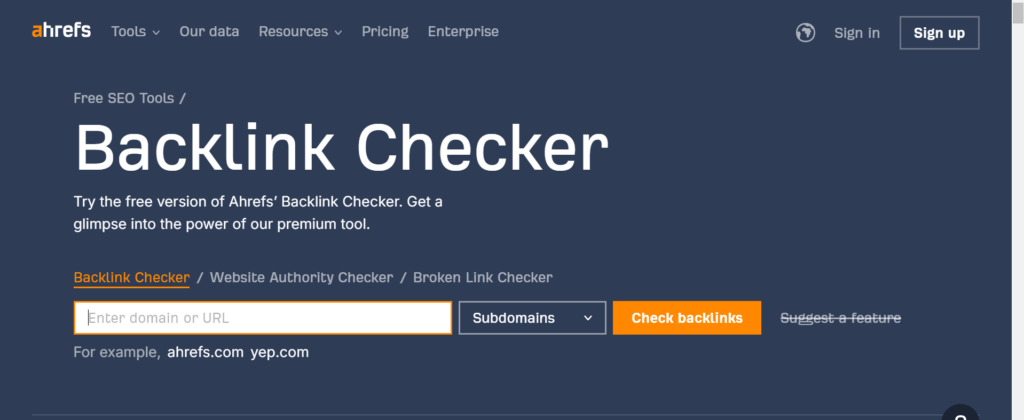
Anchor Use and Placement
Anchors are placeholders that house your links. Beyond that, they describe your backlink (to search engine bots) and the reason to click them (to readers).
Hence, anchors are critical to the quality of backlinks and whether the links will yield results.
So, what can you do to get your anchor game right?
I already wrote an extensive guide on anchor use and optimization. Check it out!
Now, let’s discuss placement…
Ordinarily, link placement might seem inconsequential to backlink quality. But that stance will change if you take a closer look at this:
Similarly to how you use anchors, where they are placed is critical to fulfilling your SEO goals.
If users can’t find your anchors, it won’t matter whether they are branded, generic, keyword-optimized, or relevant. You won’t see any significant SEO results.
What, then, is the way out?
Place your anchors as high as possible on your referring page!
📌 Do nofollow/dofollow links matter?
While there is this hype around dofollow links, I’m not psyched about it. Yes, they offer the most link juice. Nonetheless, nofollow backlinks are equally beneficial — especially in increasing traffic and exposure.
And I’m not the only one with this view.
Navneet Kaushal (from PageTraffic) revealed, in a YouTube event, “How to Do SEO in 2024,” that he favors 70% nofollow links.
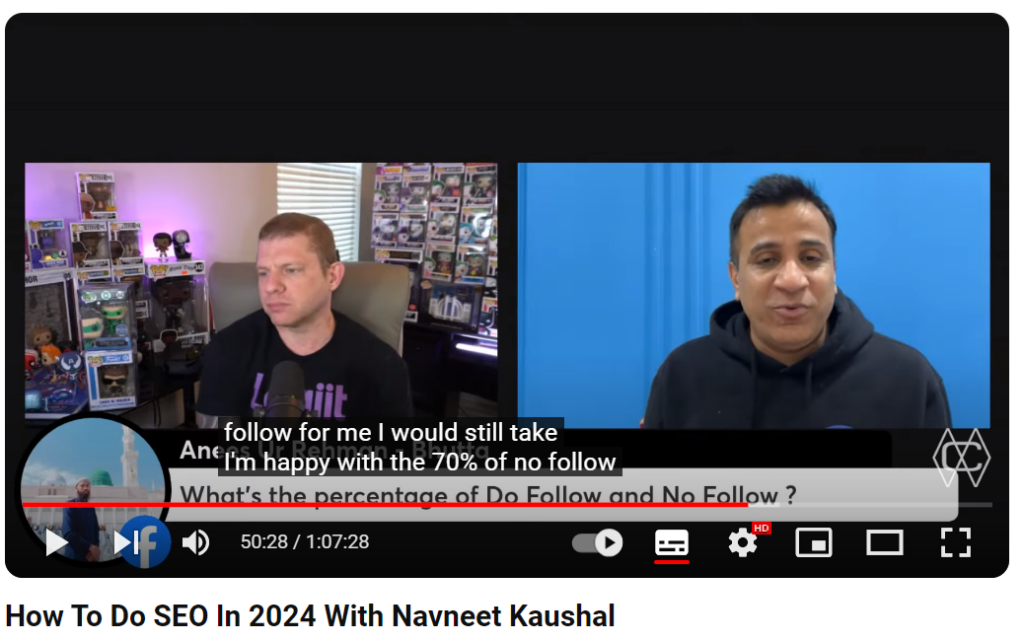
Bottom line: use a healthy mix of the two dofollow and nofollow links. But check that anyone you use is relevant, has high authority and that the anchor text and placement are done correctly.
7 Link Building Strategies for Quality Backlinks
While there are several link building strategies, we can only vouch for these tested and proven strategies below:
- PR link building
- Blogging
- Guest posting
- Link insertions
- Linkable assets + targeted outreach
- HARO
- Broken Link Building
PR Link Building
If “best” means “tested and proven,” then, the best way to build quality backlinks that will benefit your website is through press releases.
According to a survey of 800 SEOs, 13% use and get quality backlinks with PRs. You should also follow suit.
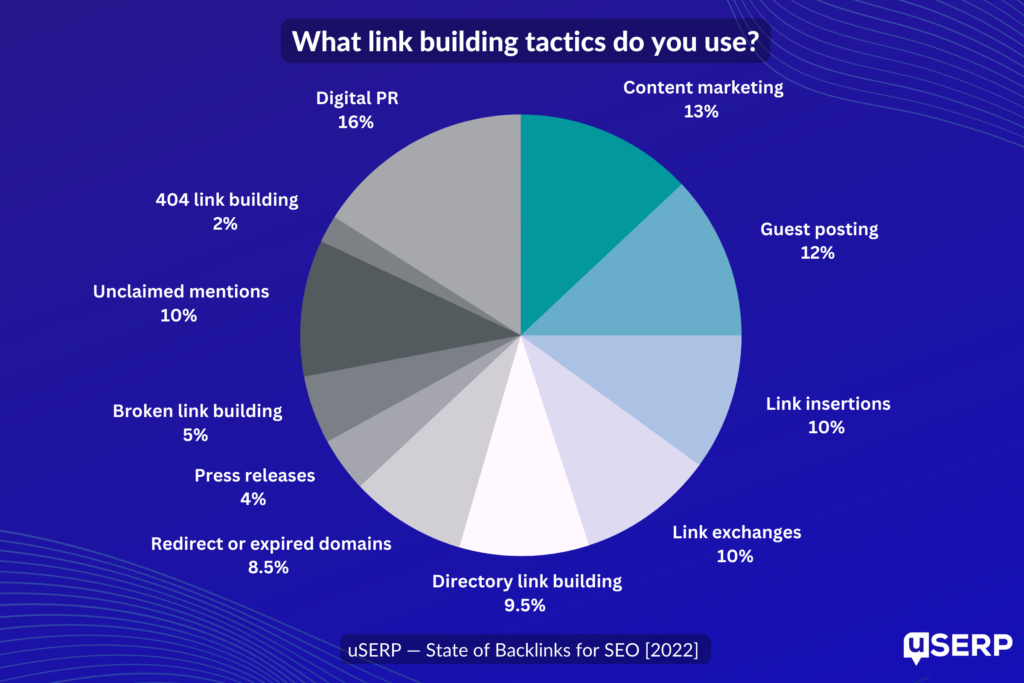
So, how is PR link building done?
- First, host or be part of a newsworthy event — e.g., product launch, open day on select products, sponsoring local events or at your alma mater
Alternatively, weave your story into current events.
- Write a catchy PR around the event
- Pitch the PR to media houses — local and national
Further reading: How to Make Your PRs Stand Out
Blogging
Link building benefit or not, blogging is critical to the success of online businesses. For starters, blogs accommodate several keywords, compared to homepage or service pages.
Take the top 5 organic keywords for HubSpot as an example.
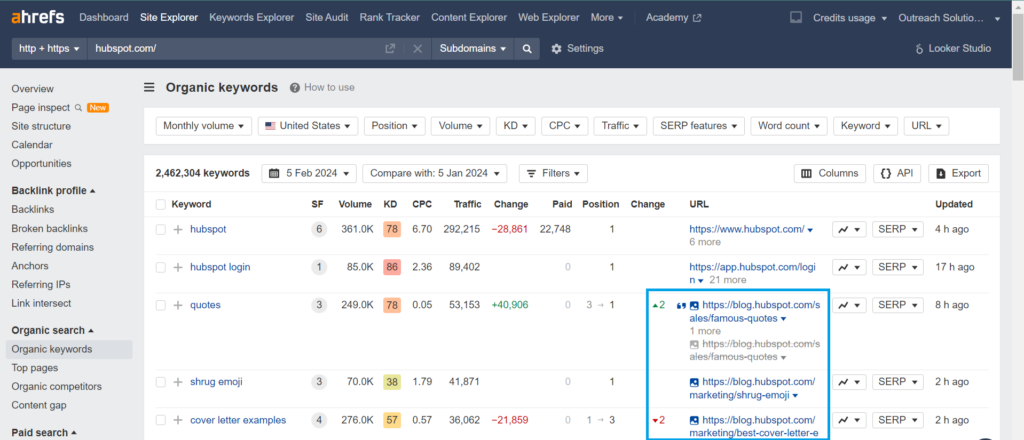
3 of the 5 are blog posts.
Furthermore, blogs cover a range of topics. As such, they help to create topical authority, lessen prospects’ reservations, and facilitate decision-making.
All these fine details automatically bring in quality backlinks, traffic, and sales.
How does blogging bring in backlinks?
- The idea is to find high-ranking content and study why it ranks high on search engine result pages.

- Then, you’ll write something better and target the referring pages for backlinks.
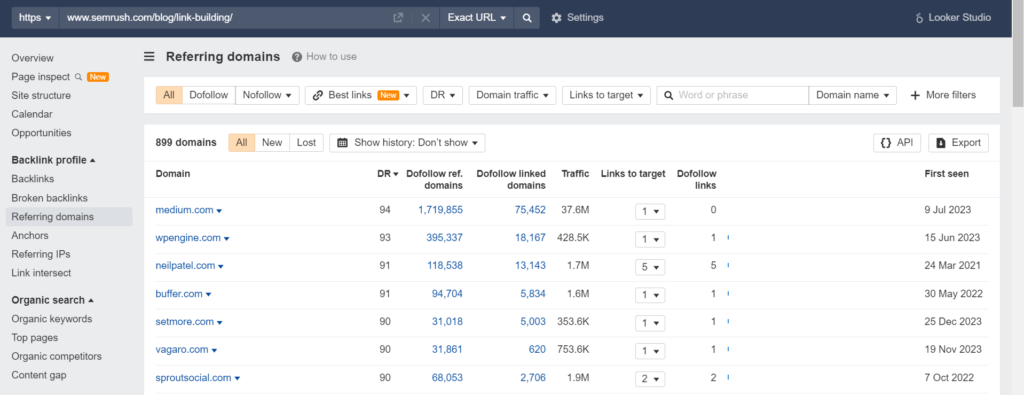
Also read: How to Write SEO-Friendly Blog Posts
Guest Posting
Guest posting is the same thing as blogging. The only difference is where the post is published. In the case of the former, the destination is an external website like this:

Furthermore, guest posting is even easier than blogging to generate quality backlinks.
Using the screenshot above as an example, the writer got 3 backlinks from just a guest post: 1 to his social network, another to his agency website, and one to his blog.
Achieving such a feat with a regular blog post would have taken more time.
How can you go about guest posting for quality backlinks?
- First and most importantly, read the submission guidelines of your target blogs.
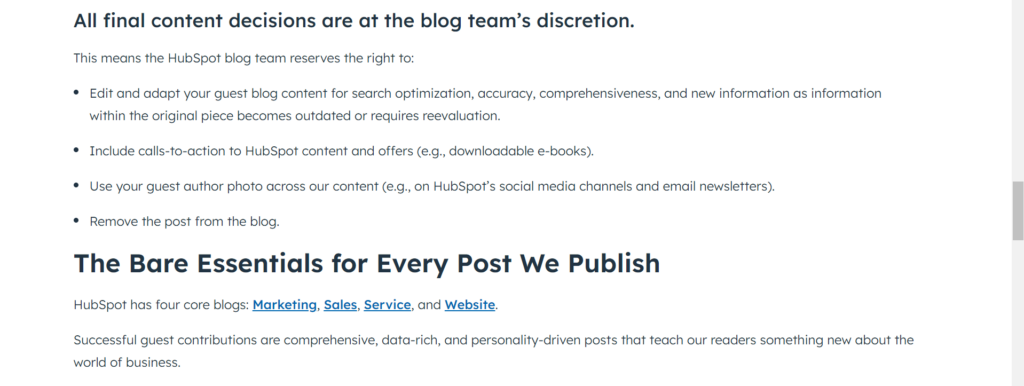
- Create stellar content
- Wait for approval > edit > publish > get a backlink
Link Insertions
These are also called niche edits and work similarly to guest posting. The two link building techniques are strictly based on external websites.
However, link insertions work faster. They don’t require you to write a new post.
So, how do link insertions work?
- Find relevant, aged posts.
- Check that the posts are well-written, rank high on search results, and have desirable traffic.
- Pitch the site owner for link insertions.
Note: link insertions need blogger outreach and relationships with site owners. Otherwise, your pitches will be neglected.
Linkable Assets + Targeted Outreach
Linkable assets include infographics, tools, statistical pages, and niche roundups. They are super-niche resources that often attract the “best” links without outreach — editorial backlinks.
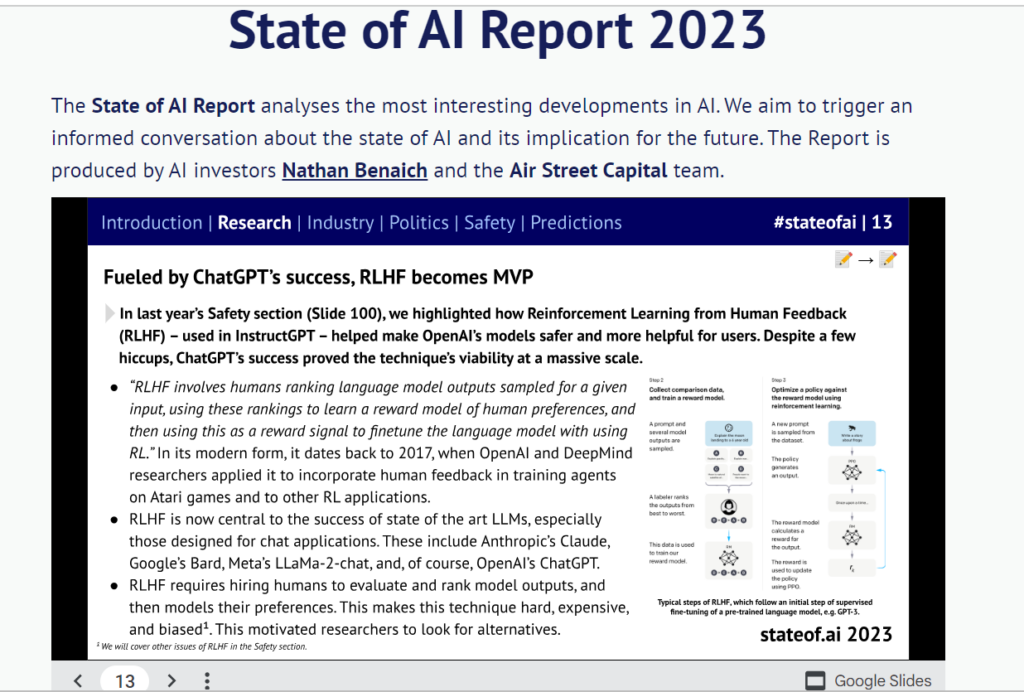
However, I won’t recommend you leave your assets hanging without help. Linkable assets are expensive.
According to Erin McGann, Senior Content Strategist at SNP Group, in her response to a Superpath Slack channel question, statistical page data analysis can be as expensive as 25-30K EURO for only 3-4 questions.

With such an outlay, it is ONLY wise to launch outreach campaigns to back your linkable assets. This way, you can milk them for all the possible backlinks.
Note:
Outreach doesn’t reduce the quality of your backlinks. Where you get them from (the target referring domains/pages) does.
Also read: Tools to Use for Outreach Link Building
HARO
I’ve already covered everything there is to know about this technique in HARO link building. Nevertheless, I’ll touch down on the key points:
- HARO is a nice link building tactic for building quality foundational backlinks — to boost your brand exposure
- HARO is one of the few meeting points where you can find reporters of top publications.

- HARO is as affordable as free.
Broken Link Building (BLB)
BLB is one of my all-time top link building strategies for quality external links. And the reason for that is simple:
BLB works based on what already works and is 100% value-based. How so?
- BLB doesn’t go about finding low-hanging keywords with potential. No! It does better; it looks for competitors’ content (but broken/dead pages) with several referring domains.
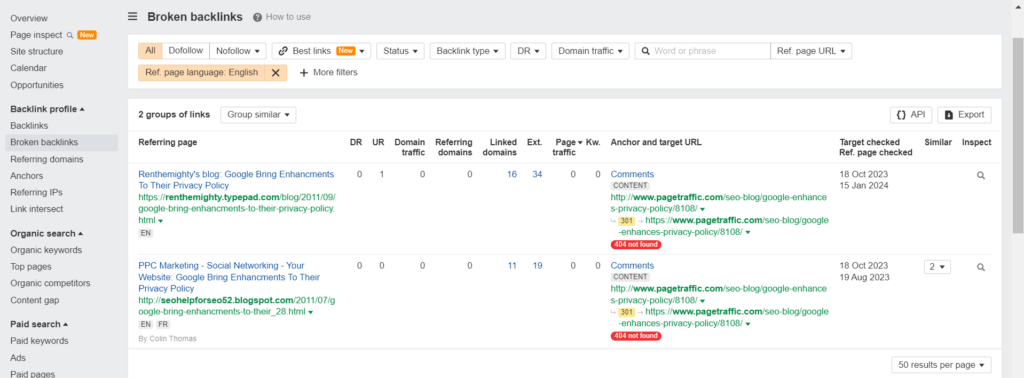
- It creates a replacement page for the missing/dead/broken content
- Then, it pitches the websites linking to the broken links
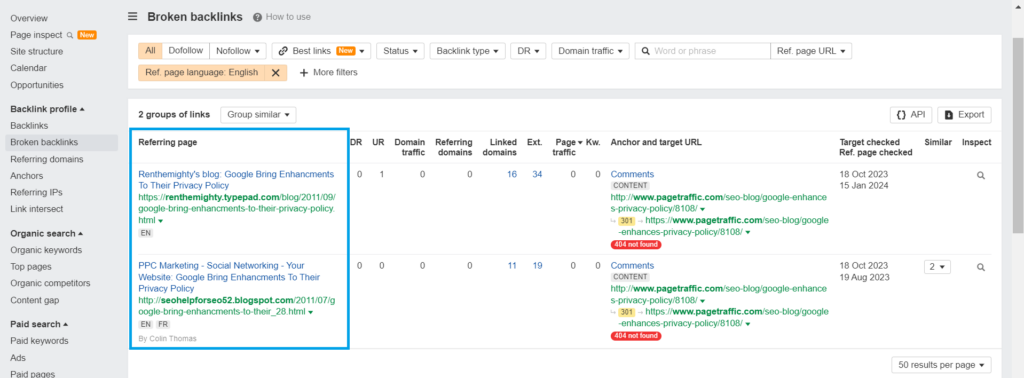
In a nutshell, you find a problem, fix it, and get a quality backlink in return.
Even with the said strategies, you must check if your link building campaign is indeed yielding results. Are they as beneficial as you’d hoped?
Is Your Site Benefiting From Your Campaigns?
Consider these 5 indicators to verify if your links are indeed working:
- Rankings on search engine
- conversions/clicks
- Traffic
- Relationships built
- ROI
Starting with search rankings.
Has your average position increased? If not, your campaign might need an expert.
Tip:
Check your average search positions with Google Search Console. But I’ll recommend Ahrefs Rank Tracker for tracking a keyword at a time.
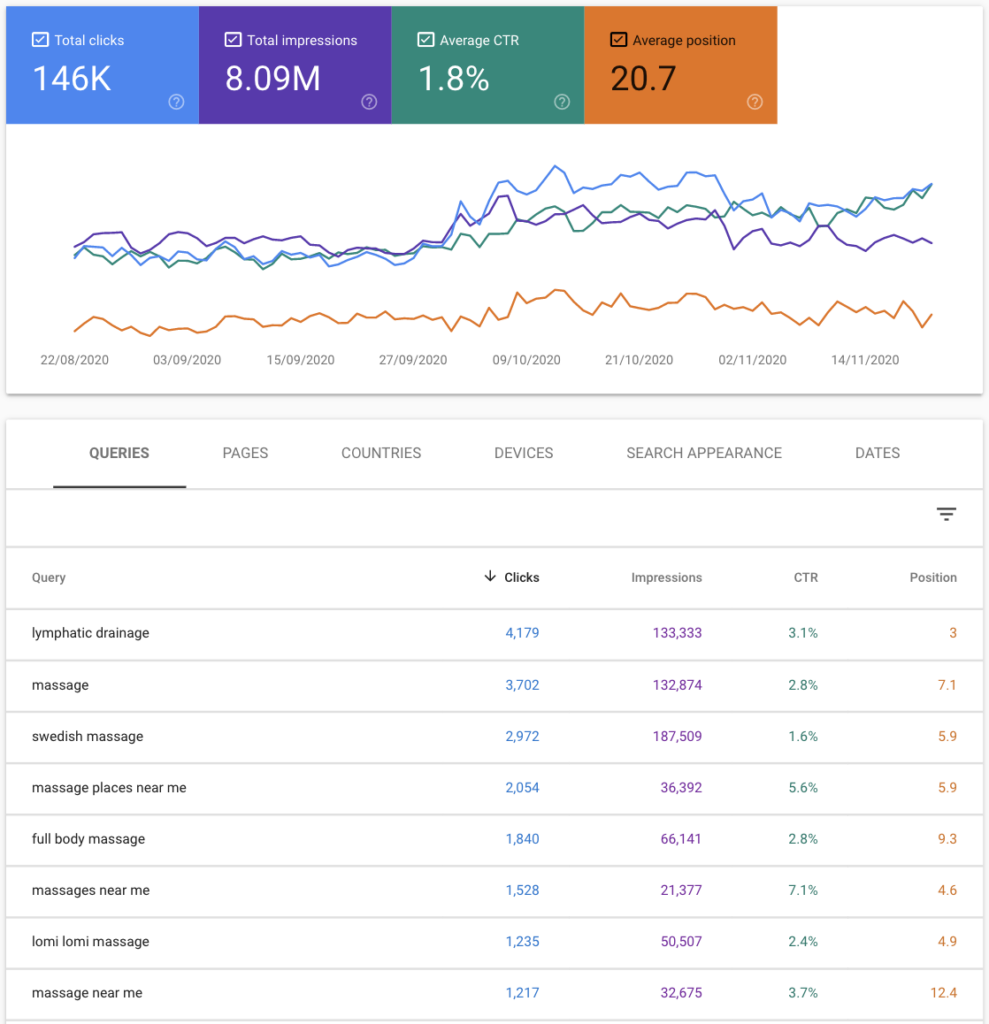
The same principle applies to conversions, clicks, and traffic. Are there any significant increases in these metrics?
You can also check the metric with Google Search Console.
Furthermore, relationships can be evaluated based on “before” and “after.” How many websites point to your site before and after your link building campaigns?
Check this with Ahrefs Site Explorer.
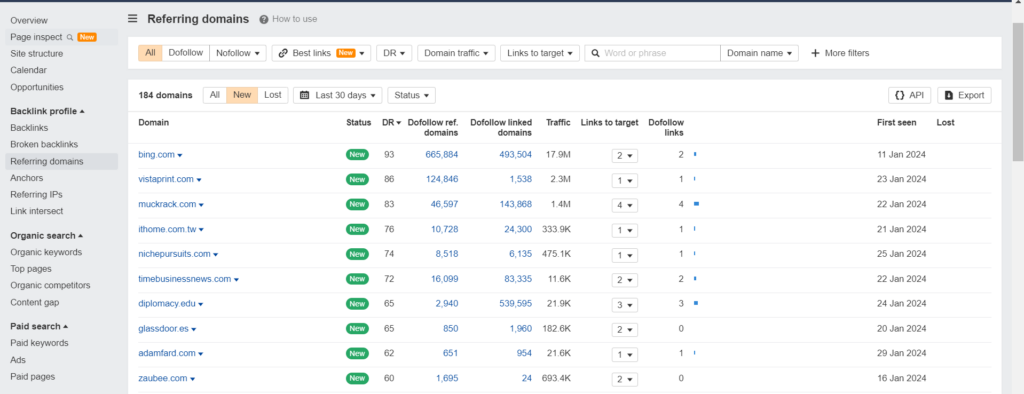
For ROI, you must look at the cost implication. How much was spent per link? How does that translate to sales or meet your set goals?
Further reading: How to Calculate Link Building ROI
Conclusion
Link building benefits your website in 10 primary ways. But it can all be summarized into 3:
It increases your organic search rankings to stay ahead of the competition > brings in hot SEO leads and organic traffic > boosts sales
However, note that these benefits are only achievable when your backlinks are built the right way.

